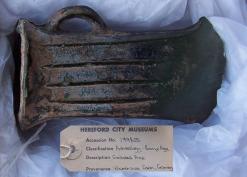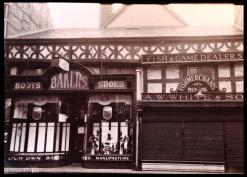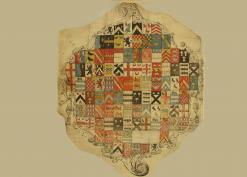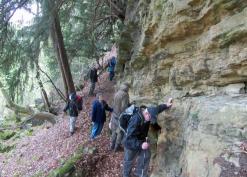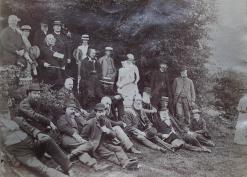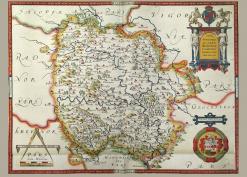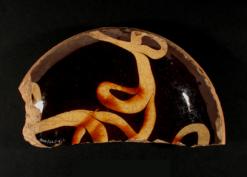Medieval pottery
Medieval and early post-medieval pottery found in Herefordshire
From the later Romano-British period until shortly before the Norman Conquest most of Herefordshire is devoid of pottery. For nearly half a millenium there appears to have been virtually no use pottery in Herefordshire. Presumably wood, metal, horn, basketry etc was used to manufacture those things which in other periods were made of baked clay.
Several centres of the industry appear in England in the later Saxon period: Thetford ware (actually first made in Ipswich) from the mid 9th century, St Neots ware (from about 900), Late Saxon Shelly ware (from the late 9th century) and Cheddar E ware (from mid 10th century). Locally made Gloucester TF41a ware is overwhelmingly the dominant contemporary pottery in Gloucester while pottery of the period in Worcester was manufactured in Gloucester, the Oxford area, Stafford and the East Midlands (St. Neots-type ware).
The earliest pottery found in Hereford is Stafford ware and Stamford ware, and from the 10th century pottery bowls and jugs in these wares begin to appear locally. Tableware continued to be made of metal and wood and doesn't often appear in the archaeological record.
For historical reasons, medieval pottery in Herefordshire has been classified according to a variety of systems. Although pottery from most sites in Hereford city and county has been classified according to the system developed by the late Alan Vince - see pottery in Herefordshire - other systems have been used for pottery in Leominster, Wigmore and other parts of Herefordshire.
©Woolhope Naturalists' Field Club, Herefordshire
